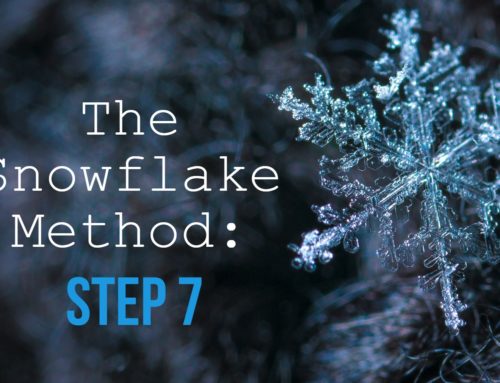I must have killed hundreds of people over the years.
Since I’m a writer of sword-and-sorcery fantasy, death come with the territory. That’s probably true for any genre that requires the choreography of combat. And when it comes to world building and mapping out a timeline that covers centuries, the beginning and end of a lifespan can occur in a single sentence.

If your character’s death didn’t significantly impact your plot or elicit an emotion from the reader, you might have done it wrong. Attribution: morgueFile.com
Some of these folks—from kings to commoners—died of natural causes. But many of my murders were quite violent, depicted in gory detail on the battlefield or in the shadows. One can hardly write about a war without tallying up the corresponding casualties. While some of that body count can be attributed to unnamed warriors, a fair number of major and minor characters have met their demise by my hand.
One of the first main characters I killed off occurs midway through my first novel (The Road to Faith). In truth, that knight’s unceremonious decapitation brought tears to my eyes as his comrades—and I—reacted to the tragedy. It wasn’t personal, you see. The story simply demanded it.
If the best characters take on a life of their own, then their deaths must be dished out judiciously.
That notion occurred to me recently while reading Veronica Roth’s Divergent series, which boasts a relatively high death toll. Major and minor characters alike fall in the three installments, but it wasn’t until the loss of a key player in the final book that my mind wandered through the pros and cons of killing off a main character—not to mention the courage it takes to pull the trigger.
It’s a topic I’ve pondered since before becoming a writer, back when I played the role of reader only and was at the mercy of other authors’ decisions when it came to the survival of the people populating their stories. Whether a character lives or dies is one of the most important decisions a writer can make. (It takes the adage “Kill your darlings” to a whole new level.)
Death tends to make a statement.
A certain self-indulgent character’s sacrifice in A Tale of Two Cities comes to mind. Heck, many classic children’s stories are none too subtle with the theme of life and loss. I’m looking at you, Charlotte’s Web and Where the Red Fern Grows.
Yes, death is a powerful tool in an author’s arsenal. And it can be abused. A friend of mine once remarked that when George R. R. Martin wants to inject tension into his A Song of Ice and Fire series, he kills off a character. I suspect that that’s an oversimplification, but none can argue that the fantasist is far from timid when it comes to the mortality of major characters, including chief protagonists.
In my opinion, those deaths don’t come off as wanton. True, not every one of them accomplishes a vital plot point (many do, however). And even if one of the first significant deaths in A Game of Thrones is steeped in shock value, it doesn’t come off as gimmicky. In fact, the deaths in Martin’s series seem not only realistic and warranted, but also necessary, which brings me to my next point:
The absence of death also makes a statement.
Nothing saps the tension from a story quicker than the realization that the main characters are invincible. No matter what sticky situation a protagonist finds herself, you just know she will escape unscathed. Granted, “life-or-death” aren’t the only stakes in the game, but I, for one, can’t abide a battle where the victor is guaranteed.
Perhaps the “unkillable” protagonist is a symptom of today’s writers’ (and readers’) appetite for sagas that go on forever. These never-ending series seemingly can’t commit to the loss of key characters or any ending whatsoever.
See also: Dissecting the difficulties to writing a sequel.
This phenomenon isn’t limited to fantasy and science fiction; Alex Cross and Stephanie Plum aren’t going anywhere soon. For that matter, Robert Langdon might be the most resilient mortal ever to solve a mystery.
Speaking of mysteries, Sir Arthur Conan Doyle tried to weasel his way out of a never-ending series by killing off Sherlock Holmes. Outrage from his fans (and undoubtedly his editor) forced Doyle to rescind the expiration of that most-famous detective. This example seems to suggest most readers don’t want to see a main character die, least of all in an unsatisfying way.
Which means that when an author decides to slay a character that readers have come to appreciate, admire, or even abhor—and, above all, come to think of as an actual person—he has the responsibility to make it meaningful.
Plot twists have their place, but key deaths should make a big splash, not cause a momentary ripple. Story arc aside, a character’s death can be a profound milestone in her development—a final, important act that epitomizes how far she has come from the start. Or how far she has fallen.
If the best characters stand up and cast a shadow, then snuffing out their light must serve a greater purpose.
Naturally, there’s no formula to determine how long a character should live or whether his final moments should be detailed in the pages of a book at all. As with every aspect of this craft, a writer must stay true to the story, whatever that story happens to be.
Slashing copious throats for the sake of bloodshed alone only serves to dilute the effect. Likewise, pulling punches out of cowardice could sterilize an otherwise honest account of the human condition.
But certainly, anyone who is brave enough to write about life must also embrace the subject of death.
Readers and writers: Do you disagree? Should main characters be invincible? Please comment below!



Quality posts is the crucial to invite the visitors
to pay a quick visit the website, that’s what this
site is providing.